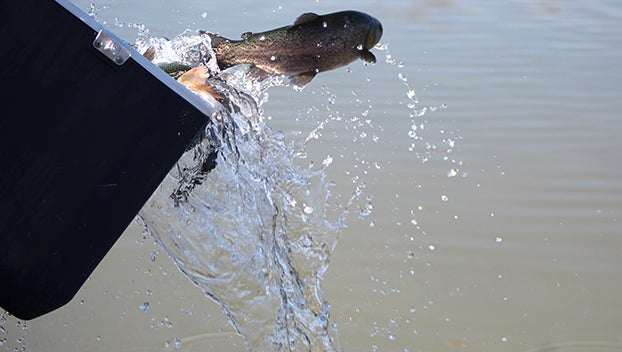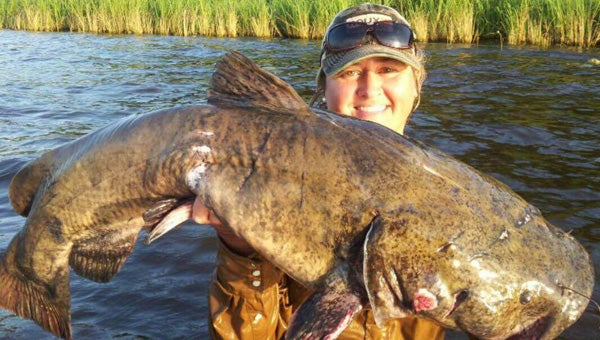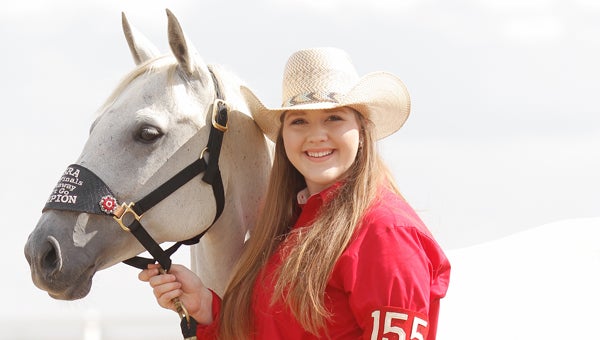St. Catherine Creek Refuge water management system under construction
Published 12:01 am Sunday, September 1, 2013

A St. Catherine Wildlife Refuge employee moves rocks into a dump truck to be used for a water control system which allows refuge employees to control how much water is let into different pools. (Justin Sellers \ The Natchez Democrat)
SIBLEY — To the naked eye, a pond is just that — a pond. But to Bob Strader and Nick Wirwa, the 14 man-made ponds at St. Catherine Creek National Wildlife Refuge are the most important things in more than 1,000 acres of land.
The refuge was made strictly for water management, Strader said. Thousands of shore birds and wading birds depend on the flooding of the Mississippi River. And it’s up to Strader, refuge project leader, and Wirwa, refuge biologist, to distribute the water throughout its ponds.
“When Congress establishes a refuge, it is given a purpose in the authorizing legislation,” Strader said. “A simplified version of the purpose of St. Catherine Creek National Wildlife Refuge is to manage for waterfowl (ducks).

Wildlife biologist Nick Wirwa removes a board from a water control system. (Justin Sellers \ The Natchez Democrat)
“To accomplish this, we manage waterfowl habitat by growing grain crops and selected native plants eaten by ducks. We also manage water, which is critical for both the desired plants and the ducks.”
The Mississippi River usually floods the refuge and outweighs St. Catherine Creek’s management efforts by reducing the non-flooded part of the growing season to too few days to be able to grow any crops. The more flooded days there are, the fewer amounts of dry days will be available in the year.
Too many flooding days is the scenario going into the fall season. Flooding from the Mississippi River did not leave the refuge until early August, leaving less than 90 days of growing season, which ends in late October.
Over flooding happens quite often, Wirwa said. The position of the refuge is not as safe from over flooding as Natchez.
“The refuge doesn’t have a levee, its not on the bluff like Natchez is, so it floods every year,” Wirwa said. “It’s actually a natural thing. The river has flooded for ages.”
In a good year, the refuge could get as many as 40,000 to 50,000 ducks in the entire winter period of mid-November through February, and peak numbers could approach 80,000 to 100,000.
“Because flooding from the Mississippi River does interrupt our best-laid plans to manage for ducks, we sometimes adjust to manage for other water birds, including shorebirds and wading birds in the fall,” he said. “To do this, we hold water from the Mississippi River in our impoundments and release it slowly to concentrate food for the wading birds in the isolated pools and (worms and invertebrates) for the shorebirds in the shallow water and mudflats.”
Wirwa said because of the amount of food they are able to get from the flooding, the migrating birds know to come to the refuge.
“Wood storks know to come up from Mexico this time every year and wildlife depends on the flooding when it’s leveled,” he said. “The fish depend on flooding to spawn.”
Strader and Wirwa attempt to disrupt nature and control the refuge’s water intake by creating infrastructures that will better distribute water from the Mississippi River.
As the water from the Mississippi River comes down a centered ditch in the refuge, it is made to service 14 different impoundments, seven on the left of the ditch, and seven on the right.
As only a few impoundments are capable of receiving water from the central ditch, the refuge is currently working on a project to make sure all 14 ponds can distribute within each other and mainly the ditch. Most importantly, they want to make sure they can fully stop water from going into an impoundment if they please.
There are two types of structures being built at the foot of each pond, one is a drain that will drain water from the ditch and exploit it into other impoundments. The second type is a diesel pump.
“When it floods, we pump water for irrigation from a diesel engine,” Wirwa said. “The structure we have holds the water, and we spread it out when we need it.”
The pump is secondary to the drain, but it is very important when birds and ducks start migrating for the winter.
Strader and Wirwa will flood some ponds deeper than other so birds and ducks of different sizes will all be able to enjoy the land.
Strader said the project cost approximately $100,000, only half of the budget given to them by the U.S. wildlife and fisheries regional office.
“The project we are working will allow us to more efficiently store and use free sources of water by creating reservoirs that can be used to flood impoundments as we manage for plants and water birds,” Strader said. “The project could easily pay for itself in 5 to 10 years.”
Strader said the project should be finished some time this week.





